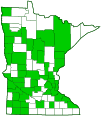giant sumpweed
(Cyclachaena xanthiifolia)
Conservation • Wetland • Description • Habitat • Ecology • Use • Distribution • Taxonomy
Description |
||
Giant sumpweed, also called marshelder, is a 18″ to 72″ tall, erect, annual forb that rises from a taproot. The stems are erect or ascending, finely ridged or grooved, and grayish-green. They are usually unbranched but sometimes have straight, upright branches. They are hairless near the base and are sparsely to moderately covered with fine curved or curled curled hairs above the base. The leaves are mostly opposite, though the uppermost are sometimes alternate. Lower leaves are long-stalked, the stalks up to 2¾″ long or longer stalks. Upper leaves are short-stalked, the stalks up to ⅜″ long or longer. The leaf blades are egg-shaped, often very broadly egg-shaped, 2⅜″ to 4¾″ long or longer, and 1″ to 5⅞″ wide. They are angled or tapered at the base and tapered to a sharp point at the tip. The lower leaves are sometimes shallowly 3-lobed. There are 3 main veins. The upper surface is slightly rough with a sparse to moderate covering of straight, stiff, sharp, appressed hairs. The lower surface is paler and silky with a moderate to dense covering of long, soft, somewhat appressed hairs. The margins are coarsely toothed, often double toothed, with sharp, forward-pointing teeth. The inflorescence is a branched array (panicle) with numerous small flower heads at the end of the stems and branches and also rising from the upper leaf axils. The individual flower heads droop at the end of a 3 ⁄16″ to ¼″ long or longer stalk. The whorl of bracts at the base of the flower head (involucre) is 1 ⁄16″ to ⅛″ long. The disk is composed of 8 to 20, usually no more than 10, male (staminate) florets in the center and usually 5 female (pistillate) florets around the margin. The staminate florets have stamens with the filaments fused into a tube and the anthers free but closely arranged in a ring. The corolla is about 1 ⁄16″ long and white to pale yellow. The pistillate florets have stamens with the filaments into a tube and the anthers free but closely arranged in a ring. The corolla is sometimes absent. When present it is about 1 ⁄64″ long and whitish. The fruit is an egg-shaped, dark brown to nearly black, 1 ⁄16″ to ⅛″ long achene with a tuft of hairs attached to one end. |
||
Height |
||
18″ to 72″ |
||
Flower Color |
||
White to pale yellow |
||
Similar Species |
||
|
||
Habitat |
||
Moist. Shores, disturbed sites. |
||
Ecology |
||
Flowering |
||
August to October |
||
Pests and Diseases |
||
|
||
Use |
||
|
||
Distribution |
||||
|
Sources |
|||
| 4/22/2023 | ||||
Nativity |
||||
Native |
||||
Occurrence |
||||
|
||||
Taxonomy |
|||
| Kingdom | Plantae (Plants) | ||
| Division | Tracheophyta (Vascular Plants) | ||
| Subdivision | Spermatophytina (Seed Plants) | ||
| Class | Magnoliopsida (Dicots) | ||
Order |
Asterales (Sunflowers, Bellflowers, Fanflowers, and Allies) | ||
Family |
Asteraceae (Sunflowers, Daisies, Asters, and Allies) | ||
| Subfamily | Asteroideae | ||
| Supertribe | Helianthodae | ||
| Tribe | Heliantheae (Sunflowers and Allies) | ||
| Subtribe | Ambrosiinae (cockleburs, ragweeds, and wild quinines) | ||
| Genus | Cyclachaena (marshelders) | ||
Genus Species |
|||
Subordinate Taxa |
|||
|
|||
Synonyms |
|||
Cyclachaena xanthifolia Iva xanthifolia Iva xanthiifolia |
|||
Common Names |
|||
big marsh-elder bur-weed marsh-elder burweed marshelder carelessweed false ragweed giant marshelder giant sump-weed giant sumpweed horseweed marsh-elder marshelder rag sumpweed |
|||
Glossary
Achene
A dry, one-chambered, single-seeded seed capsule, formed from a single carpel, with the seed attached to the membranous outer layer (wall) only by the seed stalk; the wall, formed entirely from the wall of the superior ovary, does not split open at maturity, but relies on decay or predation to release the contents.
Corolla
A collective name for all of the petals of a flower.
Panicle
A pyramidal inflorescence with a main stem and branches. Flowers on the lower, longer branches mature earlier than those on the shorter, upper ones.
Visitor Photos |
|||||
Share your photo of this plant. |
|||||
| This button not working for you? Simply email us at info@MinnesotaSeasons.com. Attach one or more photos and, if you like, a caption. |
|||||
|
|||||
MinnesotaSeasons.com Photos |
|||||
Plant |
|||||
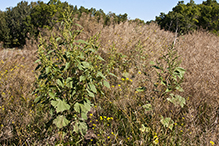 |
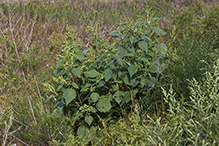 |
||||
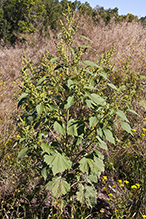 |
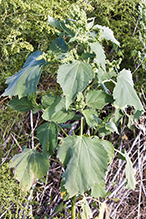 |
||||
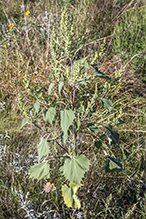 |
|||||
Inflorescence |
|||||
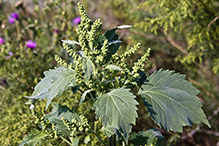 |
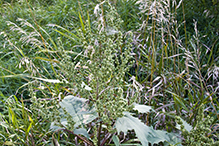 |
||||
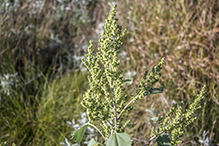 |
|||||
Flower Heads |
|||||
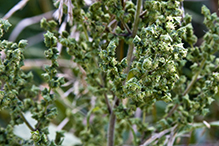 |
|||||
Leaves |
|||||
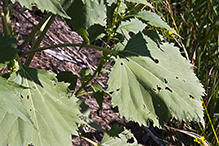 |
|||||

Slideshows |
||

Visitor Videos |
|||
Share your video of this plant. |
|||
| This button not working for you? Simply email us at info@MinnesotaSeasons.com. Attach a video, a YouTube link, or a cloud storage link. |
|||
Other Videos |
|||

Visitor Sightings |
|||||
Report a sighting of this plant. |
|||||
| This button not working for you? Simply email us at info@MinnesotaSeasons.com. Be sure to include a location. |
|||||
|
|||||
MinnesotaSeasons.com Sightings |
|||||

|
Created: Last Updated: © MinnesotaSeasons.com. All rights reserved. |
